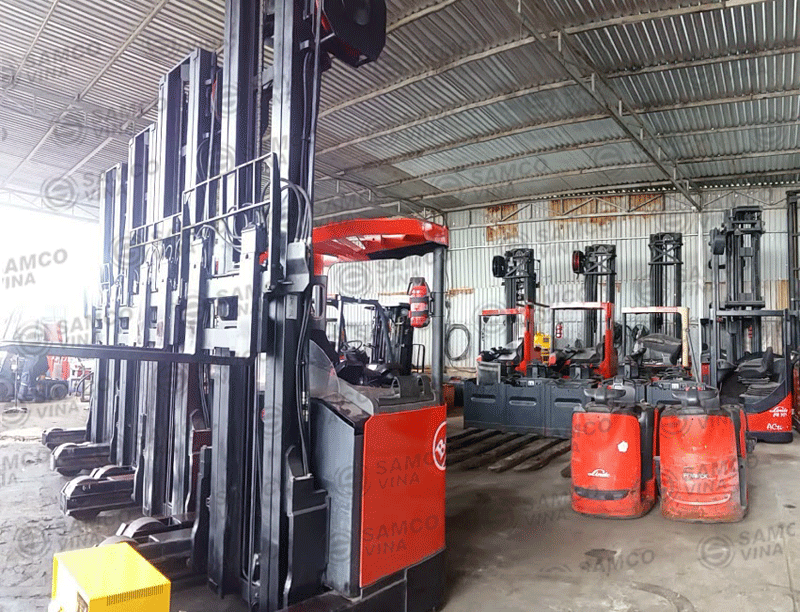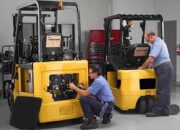CHOOSE USED FORKLIFT
Buying and using a used forklift is sometimes troublesome and risky due to not fully assessing the actual condition of the vehicle, but many people also get an old forklift for a great price. Good deal, good quality. All of the above issues will be decided by 80% of people with knowledge and experience in using and evaluating used forklifts. Having been operating for many years in this field, we have a little knowledge about all types of forklifts. However, we can’t list in detail how to choose a good car, but we want to keep the following basic issues in mind before buying and selling in the hope of minimizing the risks encountered when we buy a car. decide to buy a used forklift.

In the old forklift, the thing people fear the most is the control valve, which does not deteriorate as quickly as the oil pump, but people often sell the whole car when it breaks down, if it is wet and soggy when it is damaged. works, then there is a problem.
Start the engine, run back and forth, operate, control all functions, listen to the sound of the car, if you see any part with abnormal sounds, hissing, howling…. Then pay special attention to it. If that part is in an important form such as the engine, hydraulic ben, lifting mechanism, etc., it means that this old forklift is already sick. We quickly come to a decision.
Let the vehicle operate with a load of about 1/2 of the specified load, lift it and keep it in a suspended position a few tens of centimeters above the ground, turn off the engine! After 5 minutes, measure the height again to see how much it has dropped, a few centimeters is acceptable, but up to 10cm there is a problem with ben.
Ask the operator where the air outlet of the oil system is located, then let it operate for about 10 minutes and then check if the oil is bubbling at the air outlet (Make sure the air is completely drained before) if so. ie the system is not closed.
The oil pump is the heart of the forklift, the card pump or the gear pump are available, the gear pump is durable and seems to be more suitable for Vietnam, the pump shaft is a common place to open, need to see if it’s dry. or wet with oil, having an oil pressure gauge is best.
For the forklift truck to suddenly and heavy load, see if the automatic throttle mechanism is good, when lifting, if it jerks up, there is a problem.
The lifting piston neck must be dry, not scratched
Lift chain (If any) must not be loose, lower it to check
See if the front tire is still good
Fork lifts, lifts must absolutely not have welds
Those are the main issues you need to keep in mind, it is best when you go to buy a used forklift that you are knowledgeable or bring someone who is knowledgeable about forklifts, and at the same time, you must evaluate the amount of money you can spend to buy a used forklift. redo the problem if the forklift is used for sale yard sales. We personally recommend that you choose reputable suppliers, whose technical team will advise you on all vehicle-related problems and must be fixed at the most specific cost.
có nên mua xe nâng cũ, lưu ý mua xe nâng cũ, Xe nâng cũ, xe nâng đã qua sử dụng






